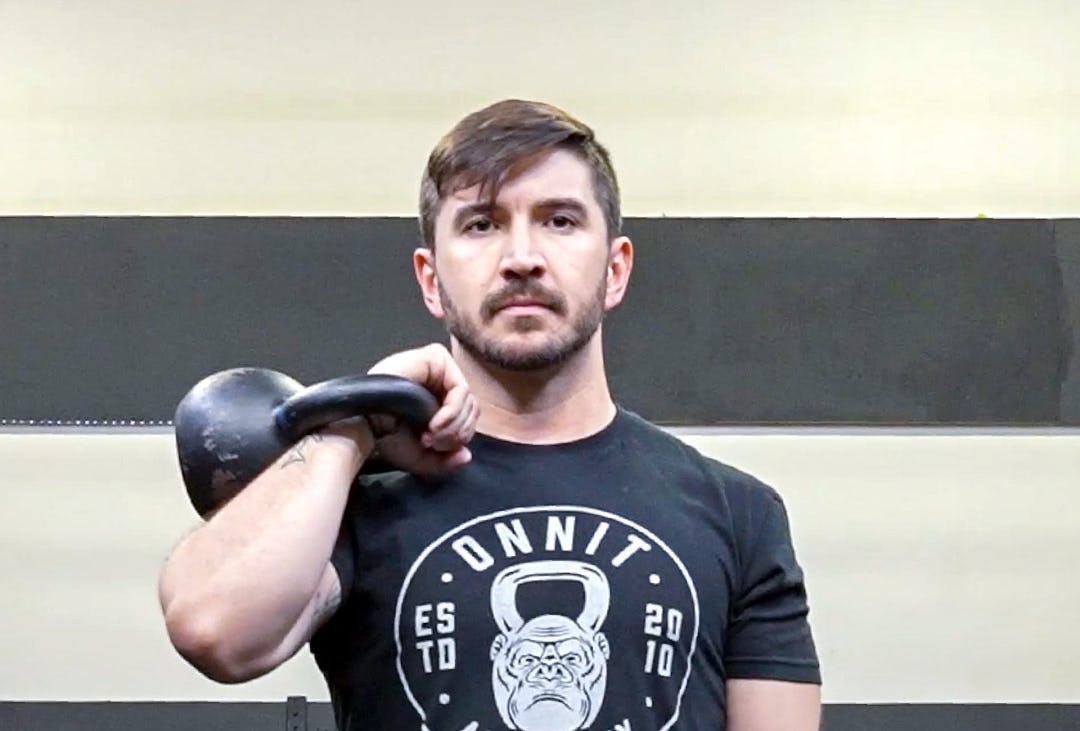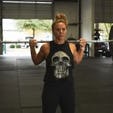The most popular gym exercises have always been those that are done with both arms or legs at a time: squats, deadlifts, bench presses, pullups, etc. We inherently like these kinds of moves because they make us feel stable and balanced (and, to be honest, they get you through your workout faster). But life rarely plays out with both feet on the ground or both arms in motion at the same time, pushing or pulling with equal force.
Most daily activities, as well as athletic maneuvers, have you working off primarily one leg or arm at a time, and that requires your body to supply its own stability. It also means that if one side is weaker than the other, it can’t rely on the stronger limb to cover for it. Running, jumping, throwing, punching/kicking, and changing direction all demand that your limbs be stable and strong when moving independently, and only unilateral training—working one side at a time—can accomplish this.
Below, Onnit Coach Nick Gomez (@coachnick44) takes you through his favorite unilateral movements for training athletes. They’ll help you to be stronger and more explosive with each arm and leg individually, and begin to correct any muscle imbalances you have between your strong side and weaker one. Unilateral training is also great for core strength, so, assuming your diet is in order, don’t be surprised if you see your six-pack muscles start to pop after a few weeks of these moves.
Unilateral Movements for Athletes Workout
1. 45-Degree Bound
Sets: 3 Reps: 3 (each leg)
[See 00:14 in the video above]
Step 1. Stand on your left leg and bend your hips and knees. Draw your left arm back while you reach your right arm forward. Do this all at once so you feel like you’re loading a spring—coiling up your body to explode.
Step 2. Jump as far forward as you can at a 45-degree angle to your right. Land softly on the right leg, controlling your body by bending at the hips and knee again. Pause for a moment to own the position, and repeat the jump on the other side. Each jump is one rep.
Bounding is great for developing running and jumping power. Try this one to start off your leg days (after you’ve warmed up, of course), or as part of a warmup before you do a sprint or plyometric workout.
2. Uneven Carry
Sets: 1 Reps: Walk 15 yards, or as far as you can in 30 (each side)
[See 00:40 in the video]
Step 1. Hold a light kettlebell in your right hand at chin level. Hold another, heavier, kettlebell at your side with the opposite arm. Stand tall, draw your shoulders back and down, and brace your core.
Step 2. Begin walking with control at a steady pace for 15 yards, or a total of 30 seconds. Switch the kettlebells and walk back.
A variation of the farmer’s walk, this uneven carry trains grip strength on one side while working your core. Go as heavy as you can control for the full distance/time you have to walk. Do the uneven carry at the end of your workouts.
3. Plank Body Saw
Sets: 3 Reps: 10
[See 01:07 in the video]
Step 1. Get into pushup position, and then rest your forearms on the floor. Your body should form a straight line from your head to your feet, with your pelvis perpendicular to the floor and your core braced. Rest your feet on a wheel, furniture sliders, or any other object that can glide smoothly on the floor (paper plates can work if you have a waxed floor).
Step 2. Keep your body braced and straight as you drive your arms into the floor to slide your body backward until you feel you’re about to lose control of your pelvis position. Slide yourself forward again. That’s one rep.
Though not technically a unilateral exercise, the body saw trains you to work your legs, hips, core and shoulders separately but in unison, making for an incredibly challenging exercise that leaves no room for weak links. This move is a good workout finisher.
4. Staggered-Stance Trap-Bar Deadlift
Sets: 3 Reps: 6
[See 01:36 in the video]
Step 1. Find your staggered stance by putting your feet together and turning your right foot out 90 degrees. Rotate it 90 degrees again in the other direction and your toes should line up with the heel of the left foot. Keep your right heel raised so you’re balancing that leg on the ball of your foot. Keep a long spine as you bend your hips back and reach down to grasp the trap bar’s high handles. Your chest should be visible to someone standing in front of you (i.e., don’t bend over too much). Take a deep breath into your belly and brace your core.
Step 2. Drive through your feet to extend your hips and stand up tall. Eighty-five percent of your weight should be on your front leg. Exhale as you come up. That’s one rep.
Perform 6 reps, rest, and then repeat on the opposite leg.
It’s easy to see how this exercise mimics the mechanics of running and leaping, as well as wrestling and blocking in football, and that’s exactly what it will prepare you to do with maximum power. Use the staggered-stance deadlift as your main strength exercise on a lower-body day.
5. Half-Kneeling Landmine Press
Sets: 3 Reps: 8 (each side)
[See 02:13 in the video]
Step 1. Wedge a barbell into a corner or use a landmine unit as shown. Kneel on the floor on one knee and hold the bar on the same side as the downed knee. Your pelvis should be level with the floor.
Step 2. Keeping your torso tall and straight and your core braced, press the bar overhead and lean into the movement with your torso. That’s one rep.
Most people never do pushing exercises one arm at a time, so the landmine press is perfect for evening up the strength between sides. Use it in place of your dumbbell or barbell pressing for a while. As each limb gets stronger separately, you may notice you can go heavier when you return to conventional, bilateral overhead and chest presses.
6. Rotational Medicine-Ball Throw
Sets: 3 Reps: 4 (each side)
[See 02:48 in the video]
Step 1. Hold a medicine ball and stand perpendicular to a wall (preferably one that’s padded) with your legs staggered. The front leg should support 85% of your weight.
Step 2. Twist your body away from the wall until you feel a stretch in your core and then toss the ball into the wall as hard as you can—but stop your rotation when your shoulders are perpendicular to the wall again. Catch the ball on the rebound and absorb the force. That’s one rep.
Punching, throwing, running, and so many other activities rely on your ability to produce and control powerful rotation. This simple exercise helps you develop it fast. Do these as part of your warmup before a heavy workout to prime your nervous system.

)





